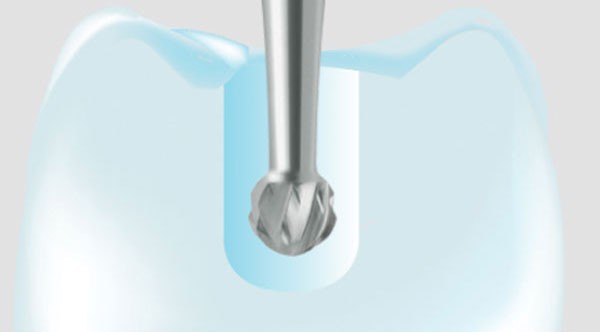By Joel Huey BA (HONS) - Content Editor
Read time: 2 minutes
When selecting a bur to purchase, you need to have the answers to the following two questions:
- 1. What shank does my handpiece require?
- 2. What is the bur being used for?
Dental burs are used with handpieces to cut and polish the dental surface, removing hard tissue such as tooth and bone.
There is a daunting range of options when selecting a dental Bur, the following breakdown should make it easier to remember. Dental burs are composed of three sections – the shank, neck, and head, and come in a variety of different materials, shapes, and sizes to suit the application. Different angles create different cutting characteristics. An operative bur will have deep and wide flutes to allow for enamel cutting, whereas a trimming or finishing bur will have more, closer together blades that are much shallower, making them perfect for polishing.
Burs come in a variety of materials, but the best option for veterinary dental procedures is carbide. Designed to prepare cavities, shape, and remove bone, and create space around roots. They leave a smooth surface and have low vibration and “chatter”.
Shanks
The shank is the long part of the bur piece, below the tip. These have different ends to attach to different handpieces. The standard length for veterinary is 20mm.
Long Straight Shank - Referred to as an HP (Handpiece) Bur
These are for use in straight, slow-speed handpieces, and are commonly used for diamond cutting discs. They are also used in surgical procedures and for drilling through thick bone.
148-400 – Straight Handpiece
Friction Grip Shank - Referred to as an FG (Friction Grip) Bur
For use in high-speed dental air turbines. The standard length for these is around 20mm.
148-800 – High-Speed LED Handpiece
148-550 – NSK High-Speed Handpiece
148-600 – Economy High-Speed Handpiece
Latch lock Shank - Referred to as an RA (Right-angle) Bur
Fit in low-speed handpieces, contra-angles, and latch lock handpieces. Generally, 2.35mm in diameter and 20mm in length.
148-200 – R/A Contra Angle Handpiece
148-100 – Contra Angle Prophylaxis Handpiece
 Bur shapes
Bur shapes
Round Bur - Useful for creating access holes, removing bone, or creating space around roots.
Flat Fissure Cross-cut – perfect for precise preparations, includes horizontal ridges to reduce the build-up of debris.
Pear/Domed bur – Creates an undercut for filling, excavating, finishing, and trimming and can be used for splitting roots of smaller teeth.
Flat Fissure burs – for sectioning multi-rooted teeth and reducing crown height.
Using the information above, we should now have the answers to our 2 questions
- 1. What is the bur being used for?
- 2. What handpiece do I need it to fit onto?
Example answer: If I want a bur for removing bone, and I want to use it on my high-speed handpiece. I would choose a round, FG bur.


